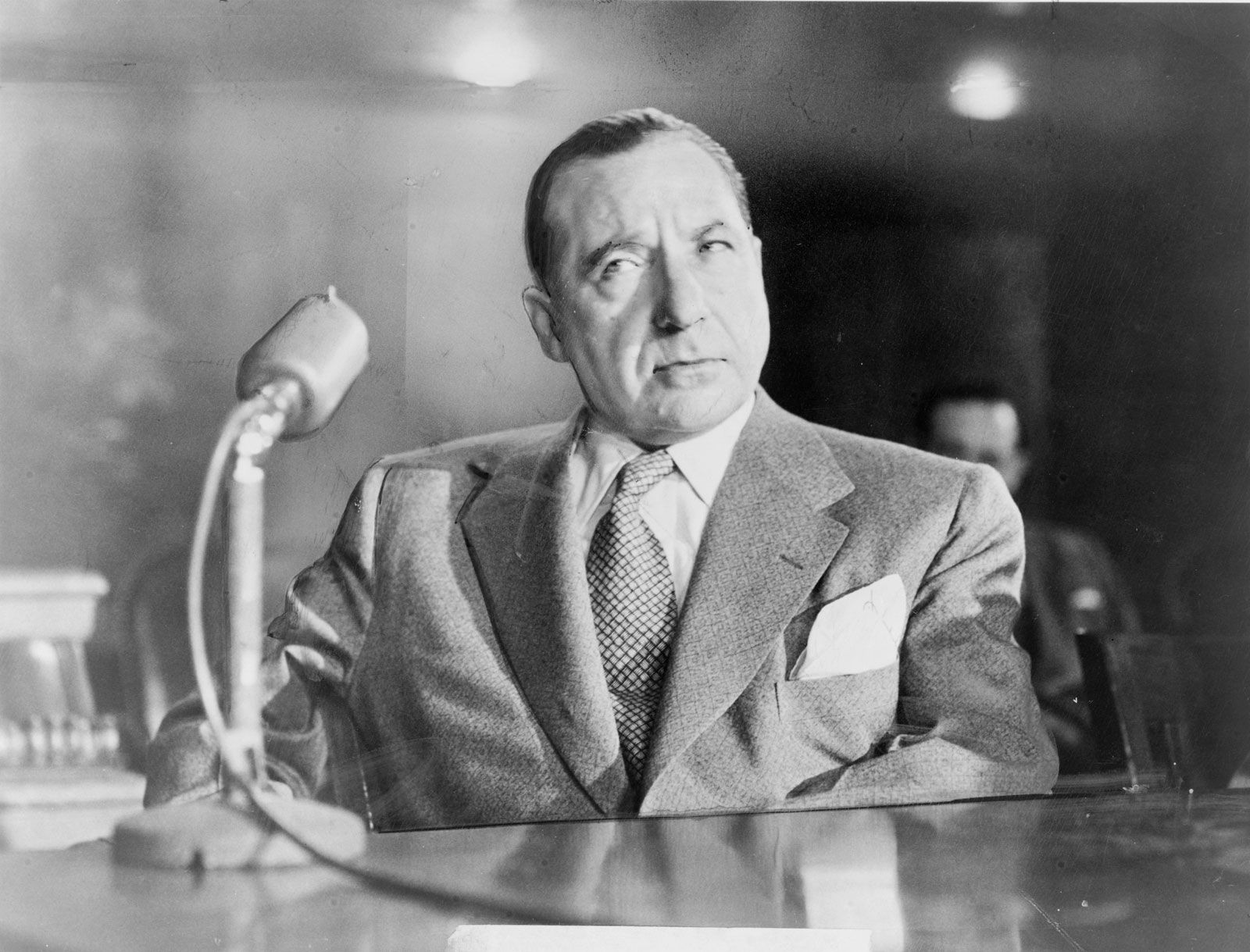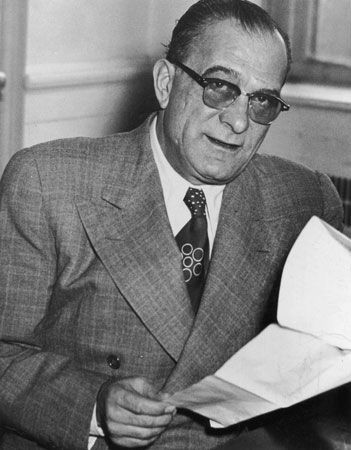The Genovese Crime Family stands as a formidable force within the landscape of New York City’s organized crime syndicates. Originating in New York, this powerful Mafia family is a cornerstone of the infamous Five Families, a collective that also includes the Gambino, Bonanno, Lucchese, and Colombo organizations. Unlike many cities dominated by a singular criminal entity, New York City became a unique hub, fostering several influential groups that divided and controlled the territory. These groups evolved into the Five Families, a crucial component of organized crime in the United States and a significant part of the broader nationwide criminal network known as La Cosa Nostra, often referred to as the Mafia, meaning “Our Affair” or “Our Thing.”
The emergence of the Five Families is directly linked to the aftermath of the bloody Castellammarese War, a brutal Mafia power struggle in the early 1930s. This conflict, named after the Sicilian origin of many participants, resulted in the deaths of approximately 60 mobsters, including numerous high-ranking figures. In the wake of this violence, Salvatore Lucania, better known as Charles “Lucky” Luciano, rose to prominence. Luciano established The Commission, a groundbreaking criminal board of directors. This council brought together bosses from the Five Families and other significant organized crime factions across the country. The Commission was designed to serve as a mediating body, a court for disputes, and an enforcement arm, aiming to maintain order and consolidate power among the families, granting the Five Families permanent and considerable influence.
Luciano, already deeply involved in lucrative criminal ventures such as extortion, prostitution, illegal gambling, and bootlegging, was appointed as the head of one of the newly formed families. He designated Vito Genovese, a trusted and capable associate, as his underboss, the second-in-command. However, Luciano’s reign was cut short when he was imprisoned in 1936. Genovese then stepped up to become the acting boss, inheriting leadership of what was then considered the largest, most influential, and most powerful of the Five Families. Facing potential prosecution for murder, Genovese fled to Italy in 1937. Despite his exile, he skillfully maintained his grip on power, remaining actively involved in both the illicit and seemingly legitimate business operations of the family. From Italy, he continued to promote their interests while cultivating relationships with members of both the traditional Sicilian Mafia and the Italian Mafia, which served as the model for American organized crime. This period saw the American Mafia further develop, drawing from the established practices of groups like the Camorra.
 Frank Costello testifying before the U.S. Senate investigating committee in 1951.
Frank Costello testifying before the U.S. Senate investigating committee in 1951.
In Genovese’s absence, Frank Costello assumed the role of acting boss. Genovese’s time in Italy was eventually disrupted when he was arrested and extradited back to the United States. However, by 1946, a turn of events occurred that saw witnesses in his case murdered, leading to his release. Upon his return, Genovese immediately set his sights on consolidating power, aiming to take control of the Commission and establish himself as the “boss of bosses,” the supreme leader within the Mafia. He orchestrated an assassination attempt on Costello, who survived but, recognizing the shift in power, relinquished his position as family head. Genovese also played a key role in the 1957 murder of Umberto (“Albert”) Anastasia, the notorious leader of Murder, Inc., a specialized and highly effective group of Mafia hitmen and a crucial ally of Costello.
 Vito Genovese, the boss of the Genovese crime family, in 1958.
Vito Genovese, the boss of the Genovese crime family, in 1958.
In the same year, 1957, the family officially adopted the name “Genovese crime family” to recognize and honor Vito Genovese’s ascendant leadership. Genovese then planned a high-profile summit meeting of Mafia leaders, which became known as the Apalachin meeting, held in upstate New York. It is believed that Genovese intended to solidify his coup and assert his dominance at this gathering. However, his plan dramatically backfired when law enforcement authorities raided the meeting on November 14, 1957. Nearly 100 mobsters were present, and around 60, including Genovese himself, were arrested. The Apalachin raid had a significant unintended consequence: it brought the intense scrutiny of the FBI onto the Mafia in a way never seen before. Many within the Mafia blamed Genovese for this increased attention. Speculation arose that Luciano, Costello, and Meyer Lansky, the Mafia’s financial mastermind and “secretary of the treasury,” may have intentionally alerted authorities to sabotage Genovese’s power grab. Notably, Luciano, Costello, and Lansky were not present at the Apalachin meeting. These figures may have also played a role in Genovese’s subsequent conviction on drug trafficking charges in 1959, further weakening his position.
Despite his imprisonment, Genovese maintained considerable influence over the family from behind bars. However, in 1962, Joe Valachi, a high-ranking soldier within Genovese’s organization who was incarcerated in the same prison, became convinced that Genovese was plotting his murder. Fearing for his life, Valachi made a momentous decision: he turned to the government, entering witness protection and cooperating with law enforcement. Valachi’s actions marked a historic turning point. For the first time, the existence of the Mafia was officially confirmed on record through his public testimony. Valachi provided exhaustive details about the inner workings of the mob and, at the urging of the U.S. Justice Department, later penned a memoir. His revelations exposed many of the Mafia’s secret dealings and its hierarchical structure. This unprecedented breach of the Mafia’s code of silence sent shockwaves through law enforcement agencies nationwide. Coupled with the introduction of the Racketeer Influenced and Corrupt Organizations (RICO) Act in 1970, Valachi’s testimony significantly fueled the FBI’s relentless pursuit of organized crime in the latter decades of the 20th century, contributing to a substantial weakening of the Mafia’s power.
Vito Genovese remained the official head of the Genovese crime family until his death from natural causes in prison in 1969. Following his death, the family leadership was characterized by relatively long periods of stability, albeit often interspersed with prison sentences and the appointment of acting bosses. Remarkably, the Genovese family has persisted into the 21st century, reportedly still involved in various criminal activities, particularly white-collar crimes such as extortion, loan sharking, and illegal gambling. As recently as 2006, a large-scale raid resulted in the convictions of approximately 30 family members on racketeering charges, and in 2022, six alleged associates were arrested, demonstrating the ongoing presence and activities of the Genovese crime family in contemporary America.

